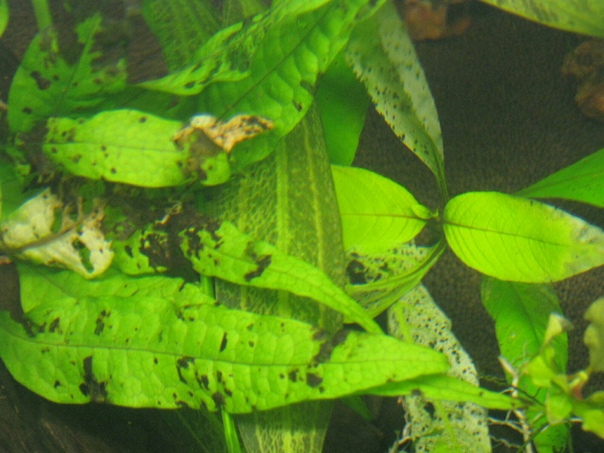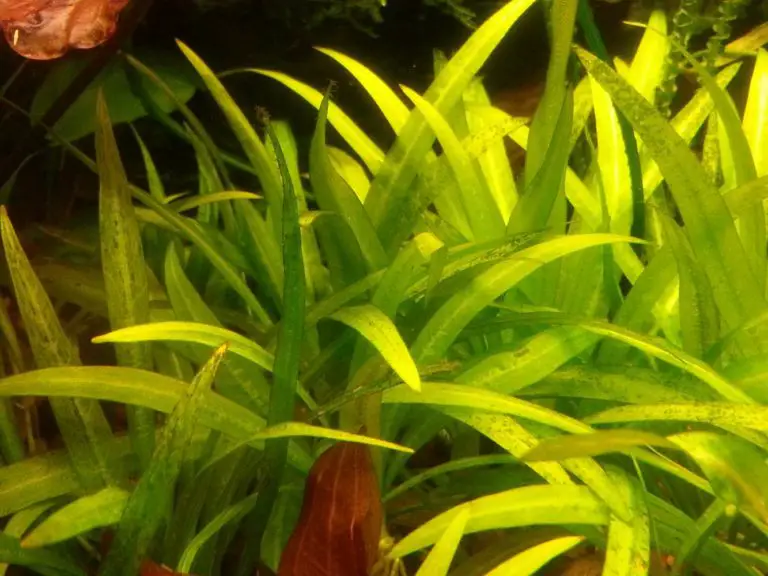There is a cryptocoryne disease, in which the leaves of the aquarium plants melting and dissolving. More often this happens due to improper planting of plants in aquariums or inappropriate care for them.

Table of Contents
Reasons For Aquarium Plants Melting and Treatment
For algae to grow well, they require the following conditions:
- appropriate lighting level;
- proper concentration of carbon dioxide;
- macro- and micronutrient fertilizers;
- quality and composition of water.
The symptoms of different diseases are similar. For this reason, the aquarist will have to work hard to understand why plants melt in the aquarium.
Lighting Level
First, you need to figure out if the artificial reservoir and vegetation are sufficiently lit. When choosing a light source, you need to take into account the individual characteristics of the plants. Some love light, while others love shadow, so most often you need to stick to the golden mean. You need to take into account the height of the aquarium itself.
Co2 Concentration
Half of the vegetation is Carboneum (C), so getting the right amount of CO2 is a top priority for every hobbyist. Carbon dioxide accelerates growth several times. Gas is the main constituent of plant cells. Even if the plant begins to wilt, the supply of carbon dioxide will increase growth by 5 times. A suitable CO2 saturation in a glass box with plants is 15-30 mg / L, and the limit for wildlife is 30 mg / L.
It is important that the lighting power is in balance with the amount of carbon supplied. Covering a lack of gas with light can lead to an imbalance. But oversaturation with carbon dioxide without light will also not give positive results.
When supplying CO2, you need to take into account how much vegetation is in the glass container. Even if there are a lot of plants, you should not sharply increase the lighting and carbon dioxide: the plants will not be able to take everything at once, so some of the useful elements will be wasted. You need to act in stages, gradually increasing the supply of light and carbon dioxide.
MACRO AND MICRO NUTRIENT FERTILIZERS
Both excess and lack of nutrients lead to negative results. The symptoms of unbalanced feeding are similar.
With an overabundance of nutrients, an algal outbreak occurs, which will lead to wilting of vegetation. If there is not enough feeding, the plant will gradually deplete, making it unviable. An algal outbreak can also occur with a lack of nutrients because representatives of the underwater flora more easily adapt to poor conditions than terrestrial plants.
Special tests can check the amount of nitrate, potassium, and phosphate. The ratio of these substances in each case may be different. General recommendations: P to N in a ratio of 1: 10/15, that is, you need to adhere to a saturation degree of 1 mg / l P for 10-15 mg / l NO3. There are no exact norms regarding K. At the same time, these proportions do not serve as a standard.
An unbalanced supply of micronutrient fertilizers (Mg, Fe, Mn, Cu, etc.) is harmful, but this can be eliminated. Such elements are needed by algae in small quantities. In case of excess, it is required to use replacement water.
Iron is considered the most necessary top dressing, therefore it is necessary to keep this element at home.
Complete guide on Micro And Macro Fertilizer Aquarium.
WATER PARAMETERS
Most algae-like soft and alkaline water.
Vigorous growth requires carbon, the best source of which is carbon dioxide. Moreover, in water, it can be in 2 forms: CO2 or HCO3-. If the gas freely penetrates through the cell walls, then the bicarbonate cannot be absorbed by the vegetation. In the second case, algae first absorb HCO3-, then extract carbon dioxide from it. Not all algae can do this complex manipulation.
If the water is soft and alkaline (pH <7.0), then about 70% of C is contained in it in the form of gas, which can be easily absorbed by plants. The lower the pH value, the more easily assimilable carbon in the liquid. With the same CO2 supply in a soft water aquarium, algae receive more Carboneum than a hard water one.
In addition, the intensity with which the vegetation will consume additional fertilizing depends on the pH value. A pH of 6.0-7.0 is considered optimal. The pH level affects how the plant is able to consume macro and micronutrients. pH in the range of 6.0-7.0 is the best option.
DAYLIGHT HOURS
The rules for the lighting regime may be different, but one thing is unchanged – 10-12 hour daylight hours. Today, a step-by-step method of supplying light is used – sunrise, zenith and sunset are recreated in an artificial reservoir. It should be remembered that it is impossible to lengthen the daylight hours as compensation for the lack of light.
When using the stepped method, ensure that the peak illumination is about 3 hours. This time is enough for the vegetation to receive nutrition and to develop more intensively. The rest of the time, the light should be moderate. Thus, the plant does not need bright light from morning to evening.
If strong lighting is used on an ongoing basis, then the plant will have enough 8 hours a day.
other causes Aquarium Plants Melting and dissolving

Plants can get sick due to improperly selected soil for aquariums.
Another important point is the state of the artificial reservoir at night when the process of photosynthesis stops. Some hobbyists recommend keeping the carbon dioxide supply running so that the pH does not change. But since the algae “breathe” at night, it is better to turn on ventilation during this time.
Filtration must be provided for the algae to grow. You can do this with a reverse osmosis filter. The main thing is not to create a strong current.
The amount of flora and fauna must be balanced.
It is good if there are organisms in the reservoir that eat algae.
The listed recommendations are not exhaustive. These are only the main factors affecting the quality of maintenance and the lifespan of aquarium vegetation. At the same time, there are no secrets for growing algae, you just need to give them everything they need.